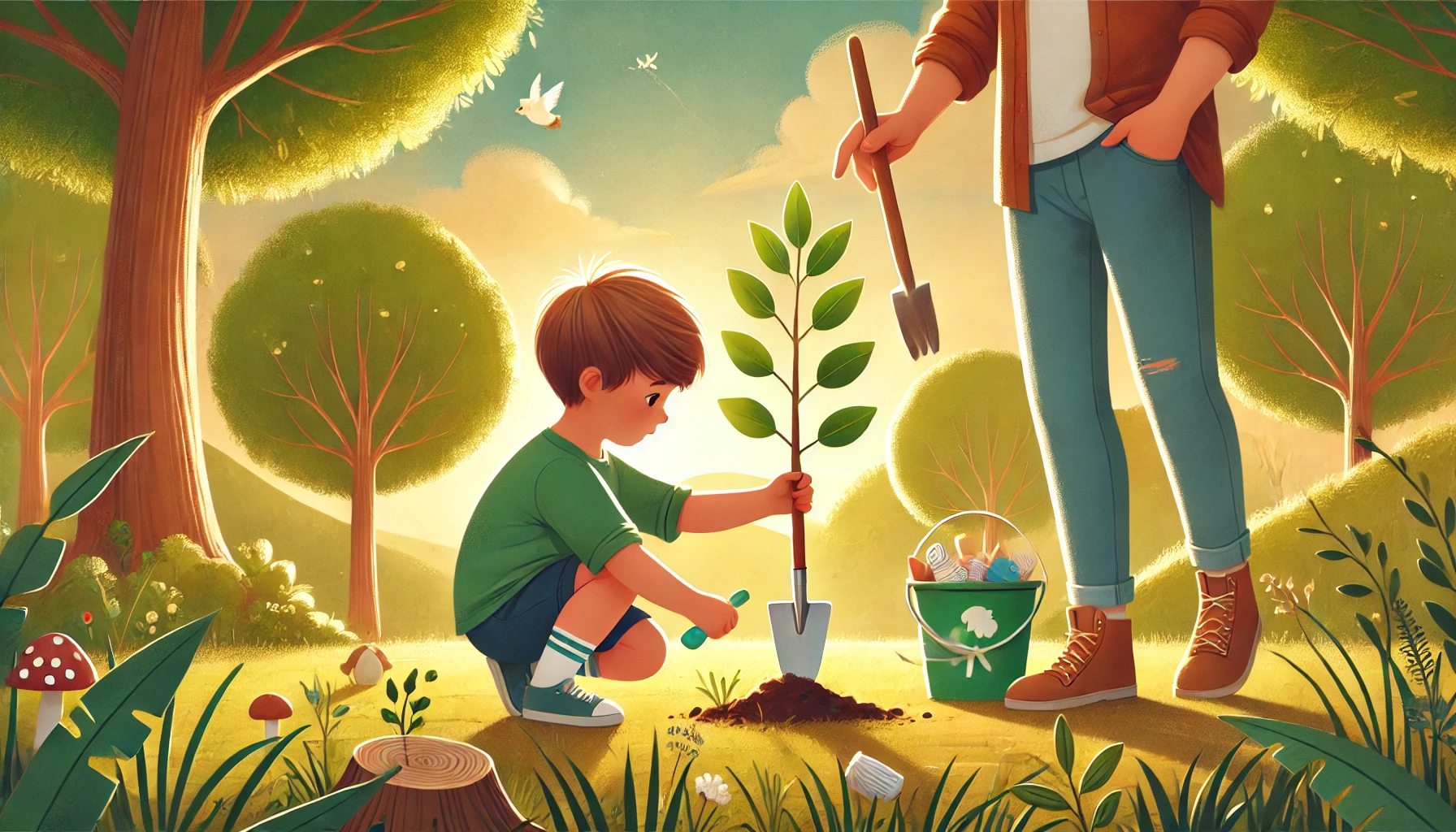How to Teach Young Children About Respecting Nature and Taking Care of the Environment
Teaching young children about respecting nature and taking care of the environment helps them develop responsibility, appreciation for the world around them, and lifelong eco-friendly habits. When kids learn that their actions impact nature, they become more mindful of how to protect and preserve the planet. Parents can encourage environmental awareness through hands-on activities, storytelling, and leading by example. In this article, we’ll explore practical ways to help children understand and practice caring for the environment.
Why Teaching Kids to Respect Nature is Important
- Encourages responsibility – Helps kids understand how their choices affect the environment.
- Develops appreciation for nature – Teaches kids to enjoy and value the natural world.
- Promotes sustainable habits – Encourages recycling, reducing waste, and conservation.
- Fosters empathy – Helps children care for animals, plants, and ecosystems.
- Prepares for a greener future – Equips kids with knowledge to make eco-friendly decisions.
1. Teach Kids Why Nature is Important
Helping children understand the role of nature encourages them to protect it.
Activity Idea:
- Take a nature walk and talk about how trees give us oxygen and animals depend on clean environments.
- Show kids a picture of a polluted area vs. a clean one and ask, “Which place do you want to live in?”
- Ask, “What do we get from nature?” (food, air, water, beauty).
What Kids Learn:
- That nature provides for us in many ways.
- How their actions affect the environment.
- The importance of keeping nature clean and healthy.
2. Encourage Kids to Reduce, Reuse, and Recycle
Teaching kids about waste management helps them develop eco-friendly habits.
Activity Idea:
- Set up three bins at home (trash, recycling, compost) and teach kids how to sort items.
- Do a craft project using recyclable materials like paper rolls and cardboard.
- Turn off lights and water when not in use and explain how it saves resources.
What Kids Learn:
- That small actions can help reduce waste.
- How reusing and recycling protect the planet.
- The importance of conserving energy and water.
3. Read Books About Caring for the Environment
Stories help children understand the impact of their choices on nature.
Activity Idea:
- Read The Lorax by Dr. Seuss (about protecting trees and nature).
- Discuss how the story relates to real life: “What can we do to help nature?”
- Encourage kids to draw or write about their favorite part of nature.
What Kids Learn:
- That nature needs people to take care of it.
- How one person’s actions can make a difference.
- The importance of standing up for the environment.
4. Plant a Garden or Grow a Small Plant
Caring for plants teaches responsibility and an appreciation for nature.
Activity Idea:
- Grow a small plant in a pot or a garden and let kids water it daily.
- Teach kids about pollinators like bees and butterflies and how they help plants grow.
- Show how food comes from nature by planting herbs, fruits, or vegetables.
What Kids Learn:
- That plants need care just like people do.
- How growing food connects us to nature.
- The role of plants in keeping the planet healthy.
5. Teach Kids to Care for Animals and Their Habitats
Helping children understand how animals depend on nature fosters empathy.
Activity Idea:
- Build a bird feeder or a small water station for local wildlife.
- Visit an animal sanctuary or nature center to learn about local species.
- Talk about how littering harms animals and how keeping nature clean helps them.
What Kids Learn:
- That animals rely on clean environments to survive.
- How their actions can help or harm wildlife.
- The importance of respecting all living creatures.
6. Spend More Time Outdoors
Experiencing nature firsthand helps children appreciate its beauty and importance.
Activity Idea:
- Go on nature scavenger hunts, looking for different leaves, bugs, and flowers.
- Have a picnic in the park and talk about why clean outdoor spaces are important.
- Encourage kids to listen to nature sounds like birds chirping and leaves rustling.
What Kids Learn:
- That nature is full of amazing things to discover.
- How spending time outside is good for health and happiness.
- The value of protecting outdoor spaces for everyone to enjoy.
7. Show Kids How to Keep Nature Clean
Teaching children to clean up after themselves encourages environmental responsibility.
Activity Idea:
- Bring reusable bags and gloves for a mini clean-up at a park or beach.
- Explain the importance of throwing trash in bins and recycling properly.
- Show kids how picking up just one piece of litter makes a difference.
What Kids Learn:
- That every small action helps keep nature clean.
- How trash affects the environment and wildlife.
- The responsibility of leaving places better than they found them.
8. Praise and Reinforce Eco-Friendly Behavior
Encouraging children when they care for the environment helps them build lifelong habits.
Activity Idea:
- Say, “I love how you turned off the lights when you left the room!”
- Use a “Green Hero Chart”, where kids earn stars for eco-friendly actions.
- Ask, “How did it feel to help nature today?”
What Kids Learn:
- That their efforts to help the environment matter.
- How making small changes leads to a bigger impact.
- The motivation to continue protecting nature.
Final Thoughts
Teaching young children about respecting nature and taking care of the environment helps them develop responsibility, empathy, and sustainable habits. By modeling eco-friendly behavior, exploring nature, and reinforcing positive actions, parents can guide children toward becoming caring individuals who appreciate and protect the planet.
